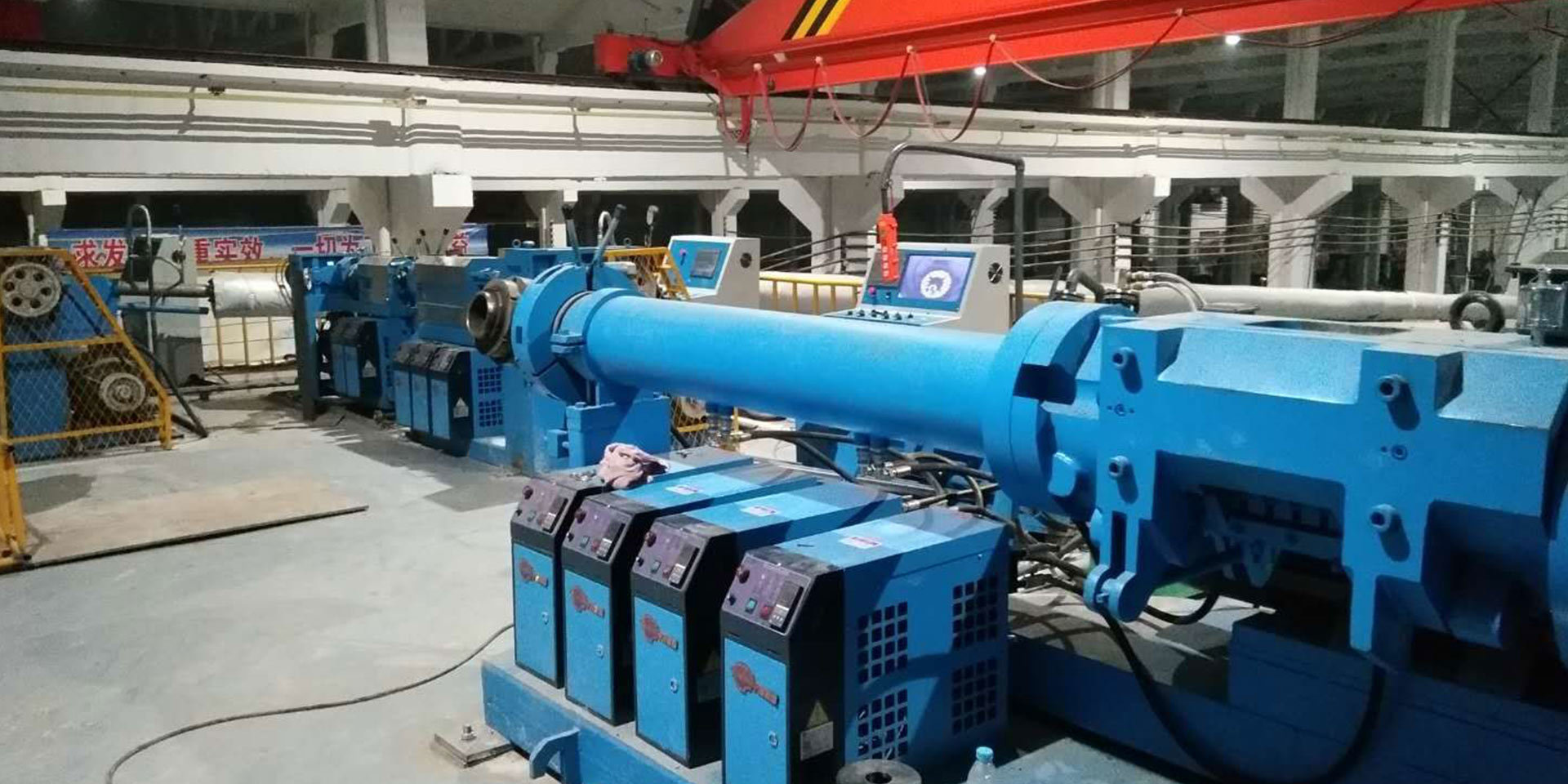Dry goods sharing, one minute to take you to understand the important stage of rubber continuous vulcanization production line
2023-02-14 09:49
What is the important stage of rubber continuous vulcanization production line? Let's take a brief analysis.
The rubber vulcanizer of rubber continuous vulcanization production line is a widely used instrument in rubber processing industry, which is used to manage and control the quality of rubber composite materials, rapid development inspection and basic rubber as research. Providing accurate data is a good combination of rubber formulations, which can accurately measure coking time, positive vulcanization time and vulcanization index. And small torque and other parameters.

Rubber continuous vulcanization production line equipment includes: host, computer, temperature measurement, temperature control, data acquisition and processing, sensors and electrical interlocking components. Among them, the temperature measurement and control circuit is composed of measurement and control system module, platinum resistance and heater, which can automatically track the changes of different temperatures of the power grid and the environment, and automatically correct the PID parameters to achieve rapid economic development and accurate temperature control. The data acquisition system and electromechanical chain complete the automatic test of the torque signal of the rubber test process, and the automatic real-time display of the temperature value and the set value. After vulcanization, it is automatically processed, automatically analyzed, calculated and printed out the vulcanization curve and process technical parameters. Shows curing time and curing torque. The computer displays the curing process in real time, and the changes of "temperature" and "time torque" can be clearly seen from the above.
The vulcanization process of the rubber continuous vulcanization production line can be divided into four stages of development, and each student stage has its own characteristics. By measuring the tensile strength of the rubber (or vulcanizing agent), it can be seen that the entire vulcanization process can be divided into four stages: vulcanization induction, pre-vulcanization, regular vulcanization and over-vulcanization (for natural rubber, simplified to the original version).
rubber vulcanizing machine vulcanization induction period:
During the vulcanization induction period (scorch time), crosslinking has not yet begun, and the compound has good fluidity. This stage determines the scorch performance and processing safety of the compound. At the end of this stage, the rubber begins to crosslink and loses fluidity. The length of the vulcanization induction period is related to the properties of the rubber molecules during the vulcanization of the raw rubber, which mainly depends on the additives used. For example, longer scorch times and higher process safety can be achieved with the use of delay promoters.
rubber vulcanization instrument pre vulcanization:
After the vulcanization induction stage, there is a prevulcanization stage in which crosslinking occurs at a certain rate. In the pre-vulcanization process, the degree of cross-linking is low. Even if the tensile strength of the later vulcanized rubber is reached, the elasticity cannot reach the expected level, but the tearing and dynamic cracking performance is better than the corresponding vulcanized rubber.
rubber vulcanization instrument is vulcanization:
After reaching the positive vulcanization stage, the physical properties of the vulcanizate reach or approach, or reach a comprehensive balance of properties. After the normal vulcanization stage (vulcanization plateau), it is a high-sulfur stage. There are two situations: natural rubber has a "return to nature" phenomenon (decreased elongation), most synthetic rubber (except butyl rubber) elongation is increasing.
rubber vulcanization instrument over sulfur:
For any rubber, not only will cross-linking occur during the vulcanization process, but the production chain and molecular chain will also be broken due to heat and other factors. This phenomenon runs through the entire vulcanization process. In the high sulfur stage, if crosslinking is still dominant, the rubber will harden and the tensile strength will continue to increase. On the contrary, the rubber will soften and return to its original state.
Dry goods sharing, one minute to take you to understand the important stage of rubber continuous vulcanization production line
recommend reading
Enhancing Efficiency in Cable Production Lines: A Comprehensive Guide
The cable production line plays a crucial role in the electrical and electronics industry, particularly in the manufacturing of various types of wires and cables. Understanding the intricacies of this production line can lead to significant improvements in efficiency and output quality. Here, we will explore the key components, optimization strategies, and technological advancements that can eleva
How to Optimize Your Cable Production Line with Plastic Extrusion
How to Optimize Your Cable Production Line with Plastic Extrusion In the ever-evolving landscape of the electrical cable industry, optimizing production lines is crucial for maintaining efficiency and competitiveness. **Plastic extrusion** stands out as a transformative process that can significantly enhance production capabilities. In this article, we will explore the intricacies of plastic extru
Understanding Wire and Cable Extrusion Production Lines: A Comprehensive Guide
In the electrical and electronics industry, the production of wires and cables is a fundamental process that ensures the efficient transmission of electricity and data. A wire and cable extrusion production line is a specialized setup designed to manufacture cables by extruding materials into specific shapes and sizes. This process is crucial for producing various types of electrical cables, inclu
Innovative Solutions: Cold Feed Rubber Extruder Technology in Today's Industry
Innovative Solutions: Cold Feed Rubber Extruder Technology in Today's Industry Table of Contents 1. Introduction to Cold Feed Rubber Extruder Technology 2. Understanding the Mechanisms of Cold Feed Extrusion 3. Benefits of Cold Feed Rubber Extruder Technology 3.1 Enhanced Product Quality 3.2 Increased Production Efficiency 3.3 Cost-Effectiveness 4. Applications of Cold Feed Rubber Extruders in the
Understanding Rubber Extruders: A Key Component in Electrical Wire and Cable Manufacturing
Rubber extruders are essential machinery in the electrical wire and cable manufacturing sector, playing a pivotal role in shaping the performance and quality of electrical products. These specialized machines are designed to process rubber compounds, transforming them into various shapes, primarily for insulation and jacketing of wires and cables. Understanding how rubber extruders operate and the
How to Implement Sustainability in Cable Production Line Practices: A Comprehensive Guide
How to Implement Sustainability in Cable Production Line Practices Table of Contents Understanding Sustainability in Cable Production The Importance of Sustainability in the Cable Industry Current Challenges in Cable Production Strategies for Sustainable Cable Manufacturing Energy-Efficient Production Techniques Recycling and Materials Management Technological Advancem



